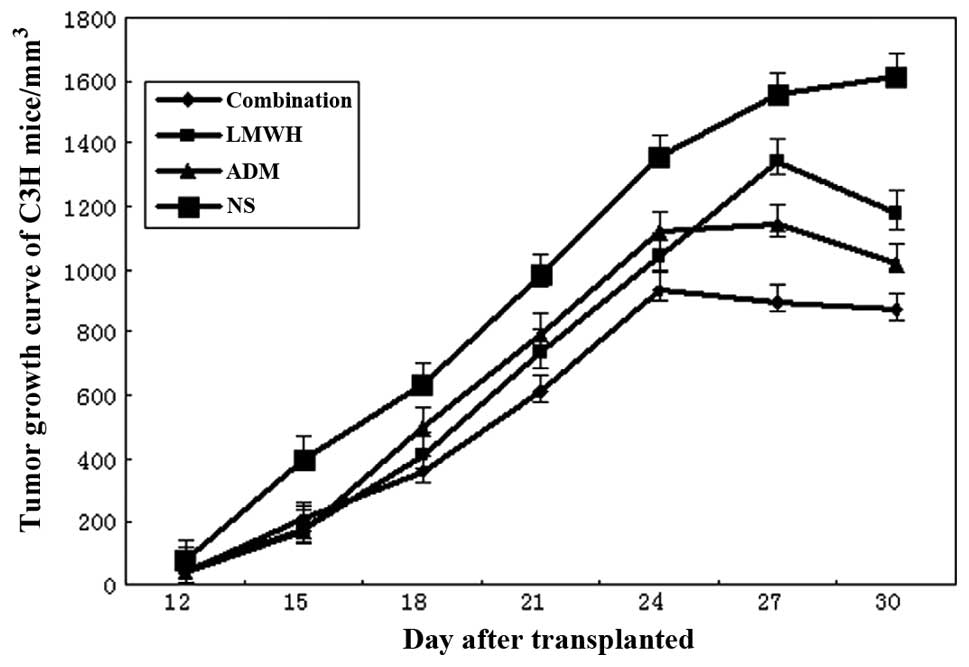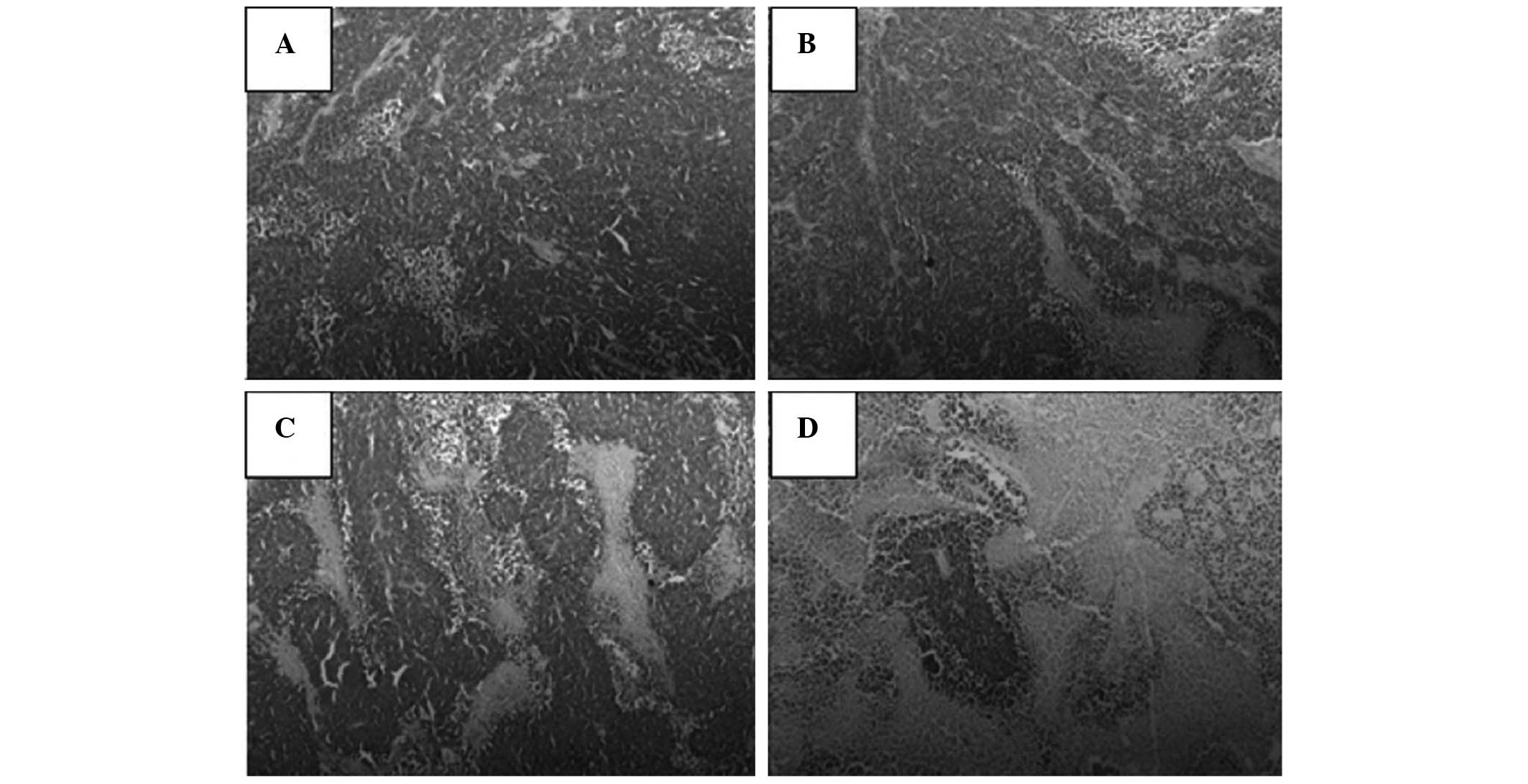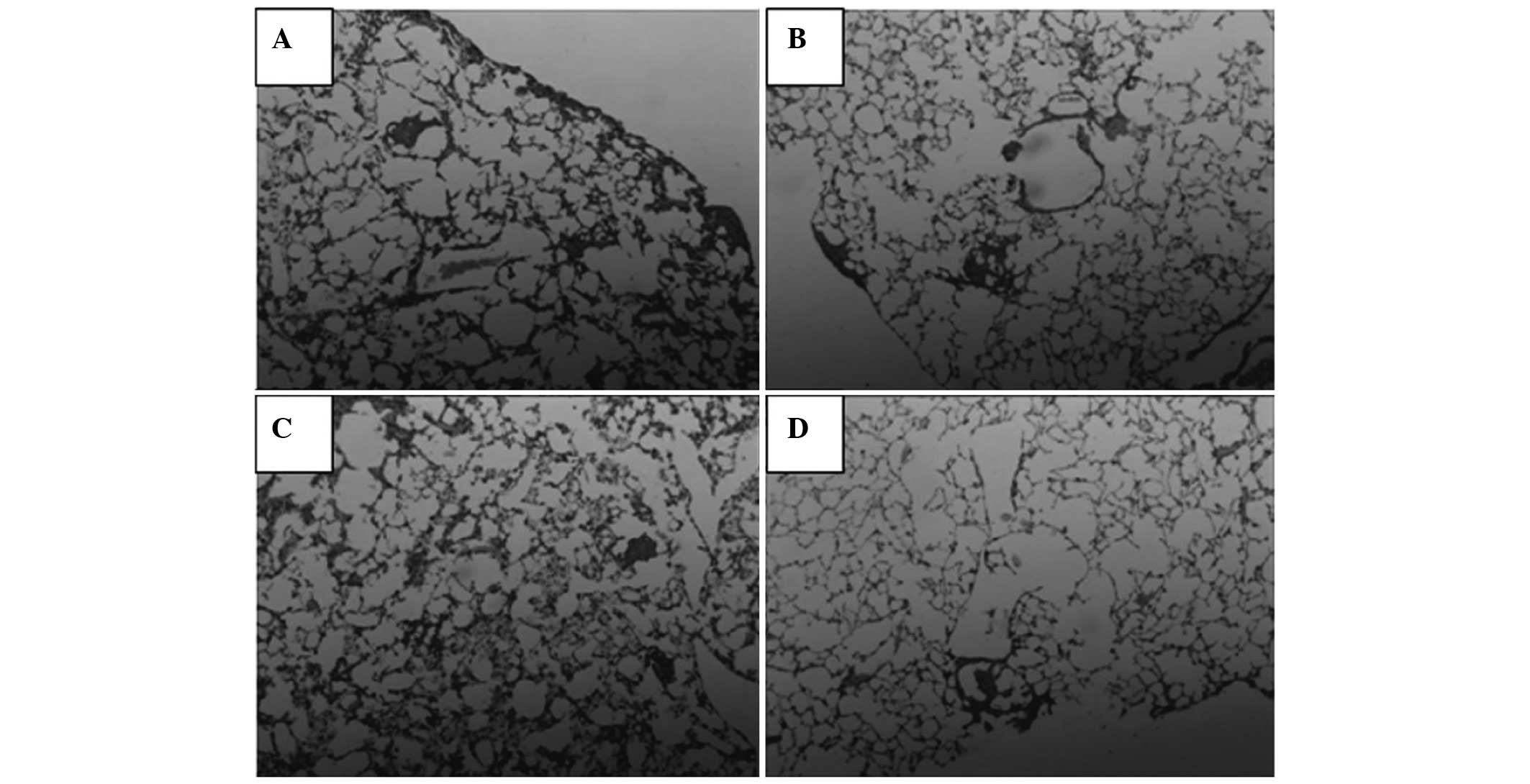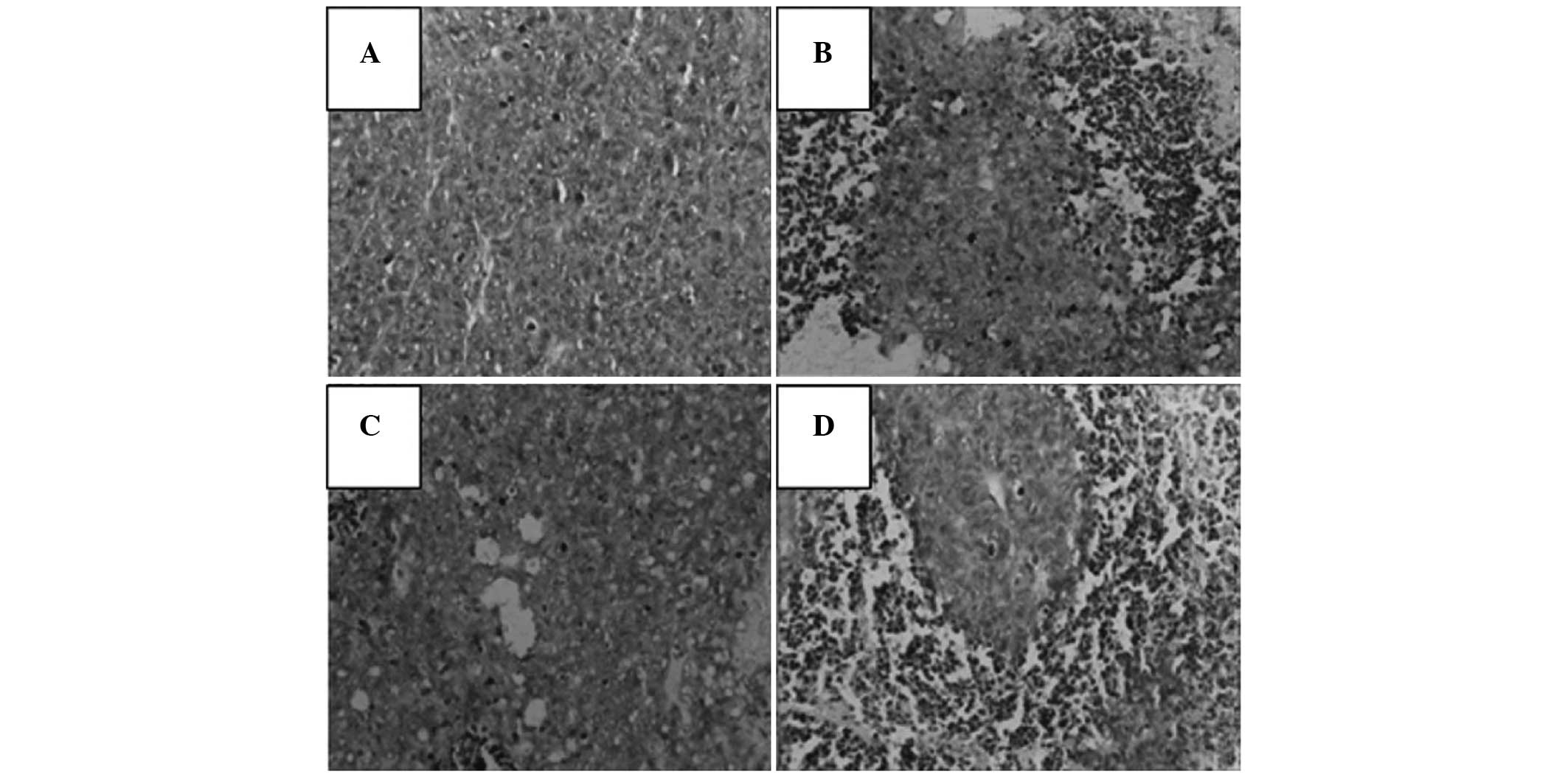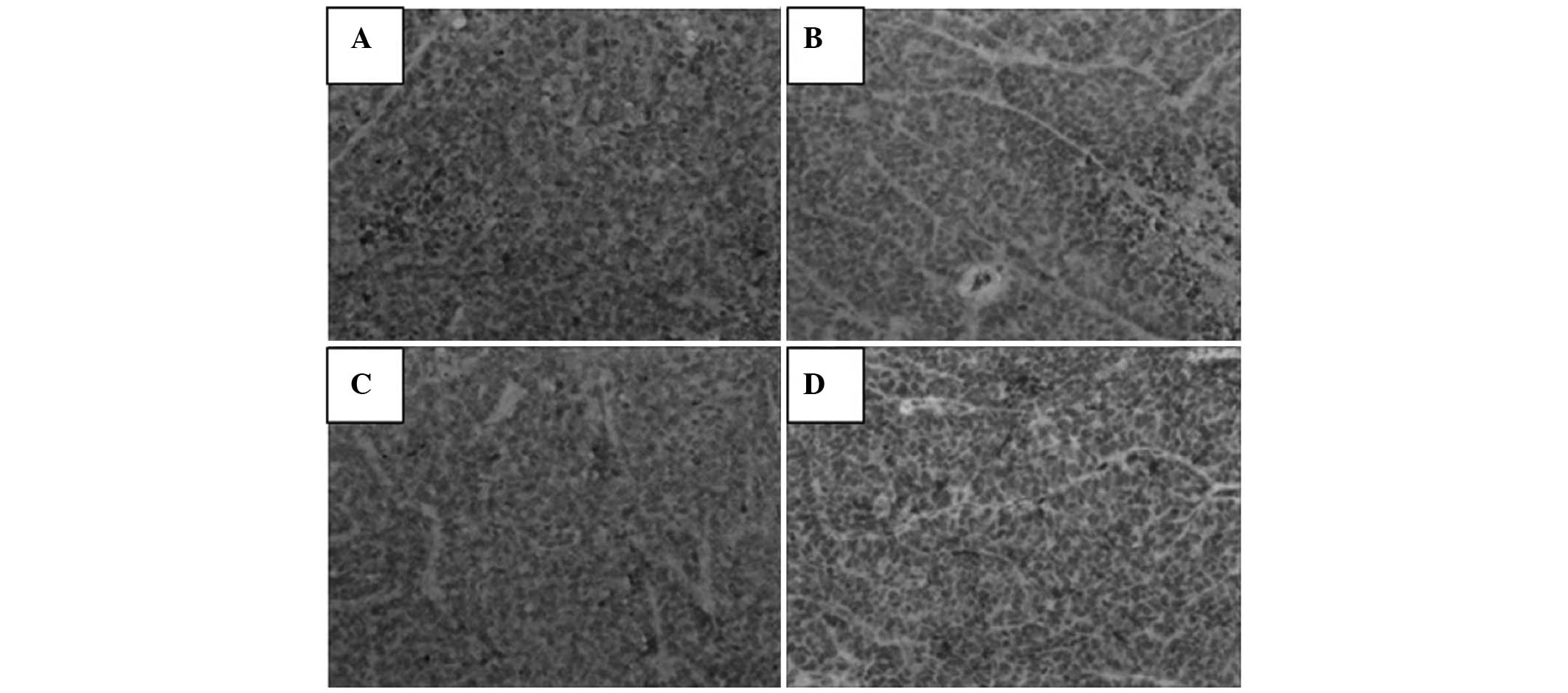|
1
|
Marsden CG, Wright MJ, Carrier L, et al: A
novel in vivo model for the study of human breast cancer metastasis
using primary breast tumor-initiating cells from patient biopsies.
BMC Cancer. 12:102012. View Article : Google Scholar : PubMed/NCBI
|
|
2
|
American Cancer Society. Cancer Facts and
Figures. 2009, http://www.cancer.org/docroot/STT/content/STT_1x_Cancer_Facts__Figures_2009asp?from=fasturi.
Accessed February 5, 2010
|
|
3
|
Borsig L: Antimetastatic activities of
heparins and modified heparins. Experimental evidence. Thromb Res.
125(Suppl 2): S66–S71. 2010. View Article : Google Scholar : PubMed/NCBI
|
|
4
|
Mousa SA: Heparin and low-molecular weight
heparins in thrombosis and beyond. Methods Mol Biol. 663:109–132.
2010. View Article : Google Scholar : PubMed/NCBI
|
|
5
|
Phillips PG, Yalcin M, Cui H, et al:
Increased tumor uptake of chemotherapeutics and improved
chemoresponse by novel non-anticoagulant low molecular weight
heparin. Anticancer Res. 31:411–419. 2011.PubMed/NCBI
|
|
6
|
Teoh ML, Fitzgerald MP, Oberley LW and
Domann FE: Overexpression of extracellular superoxide dismutase
attenuates heparanase expression and inhibits breast carcinoma cell
growth and invasion. Cancer Res. 69:6355–6363. 2009. View Article : Google Scholar : PubMed/NCBI
|
|
7
|
Liu H, Tong X, Ma L, Xu Z, et al:
Establishment of a non-spontaneous breast cancer model in C3H mice.
Chinese Pharmacological Bulletin. 21:1396–1398. 2005.(In
Chinese).
|
|
8
|
Dredge K, Hammond E, Handley P, Gonda TJ,
Smith MT, Vincent C, et al: PG545, a dual heparanase and
angiogenesis inhibitor, induces potent anti-tumour and
anti-metastatic efficacy in preclinical models. Br J Cancer.
104:635–642. 2011. View Article : Google Scholar : PubMed/NCBI
|
|
9
|
Li JP: Heparin, heparin sulfate and
heparanase in cancer: remedy for metastasis? Anticancer Agents Med
Chem. 8:64–76. 2008. View Article : Google Scholar : PubMed/NCBI
|
|
10
|
Li Y, Liu H, Huang YY, Pu LJ, Zhang XD,
Jiang CC and Jiang ZW: Suppression of endoplasmic reticulum
stress-induced invasion and migration of breast cancer cells
through the downregulation of heparanase. Int J Mol Med.
31:1234–1242. 2013.PubMed/NCBI
|
|
11
|
Reisfeld RA: The tumor microenvironment: a
target for combination therapy of breast cancer. Crit Rev Oncog.
18:115–133. 2013. View Article : Google Scholar : PubMed/NCBI
|
|
12
|
Takeuchi A, Yamamoto Y, Munesue S,
Harashima A, et al: Low molecular weight heparin suppresses
receptor for advanced glycation end products-mediated expression of
malignant phenotype in human fibrosarcoma cells. Cancer Sci.
104:740–749. 2013. View Article : Google Scholar
|
|
13
|
Nagy Z, Turcsik V and Blaskó G: The effect
of LMWH (Nadroparin) on tumor progression. Pathol Oncol Res.
15:689–692. 2009. View Article : Google Scholar : PubMed/NCBI
|
|
14
|
Tan H, Yang S, Liu C, Cao J, Mu G and Wang
F: Enhanced anti-angiogenesis and anti-tumor activity of endostatin
by chemical modification with polyethylene glycol and low molecular
weight heparin. Biomed Pharmacother. 66:648–654. 2012. View Article : Google Scholar : PubMed/NCBI
|
|
15
|
Jayson GC, Hicklin DJ and Ellis LM:
Antiangiogenic therapy - evolving view based on clinical trial
results. Nature Rev Clin Oncol. 9:297–303. 2012. View Article : Google Scholar : PubMed/NCBI
|
|
16
|
Zcharia E, Jia J, Zhang X, et al: Newly
generated heparanase knock-out mice unravel co-regulation of
heparanase and matrix metalloproteinases. PLoS One. 4:e51812009.
View Article : Google Scholar : PubMed/NCBI
|
|
17
|
Kim SH, Turnbull J and Guimond S:
Extracellular matrix and cell signaling: the dynamic cooperation of
integrin, proteoglycan and growth factor receptor. J Endocrinol.
209:139–151. 2011. View Article : Google Scholar : PubMed/NCBI
|
|
18
|
Lindahl U and Li JP: Interactions between
heparan sulfate and proteins - design and functional implications.
Int Rev Cell Mol Biol. 276:105–159. 2009. View Article : Google Scholar : PubMed/NCBI
|
|
19
|
Vlodavsky I, Beckhove P, Lerner I, Pisano
C, Meirovitz A, Ilan N and Elkin M: Significance of heparanase in
cancer and inflammation. Cancer Microenviron. 5:115–132. 2011.
View Article : Google Scholar
|
|
20
|
Basappa, Sugahara K, Thimmaiah KN, Bid HK,
Houghton PJ and Rangappa KS: Anti-tumor activity of a novel
HS-mimetic-vascular endothelial growth factor binding small
molecule. PLoS One. 7:e394442012. View Article : Google Scholar : PubMed/NCBI
|
|
21
|
Battinelli EM, Markens BA, Kulenthirarajan
RA, Machlus KR, Flaumenhaft R and Italiano JE Jr: Anticoagulation
inhibits tumor cell-mediated release of platelet angiogenic
proteins and diminishes platelet angiogenic response. Blood.
123:101–112. 2014. View Article : Google Scholar : PubMed/NCBI
|
|
22
|
Jeong KW, Jeong MC, Jin B and Kim Y:
Relationship between structural flexibility and function in the
C-terminal region of the heparin-binding domain of VEGF165.
Biochemistry. 52:8823–8832. 2013. View Article : Google Scholar : PubMed/NCBI
|
|
23
|
Jia W, Feng K, Fan P, et al: Post-TACE
combination therapy of heparin and octreotide results in decreased
tumor metastasis in extrahepatic tumorigenesis. Cell Biochem
Biophys. 62:35–40. 2012. View Article : Google Scholar : PubMed/NCBI
|
|
24
|
Shafat I, Bern-Arush MW, Issakov J, Meller
I, Naroditsky I, Tortoreto M, et al: Preclinical and clinical
significance of heparanase in Ewing’s sarcoma. J Cell Mol Med.
15:1857–1864. 2011.
|
|
25
|
Judy BF, Aliperti LA, Predina JD, Levine
D, et al: Vascular endothelial-targeted therapy combined with
cytotoxic chemotherapy induces inflammatory intratumoral
infiltrates and inhibits tumor relapses after surgery. Neoplasia.
14:352–359. 2012.
|















